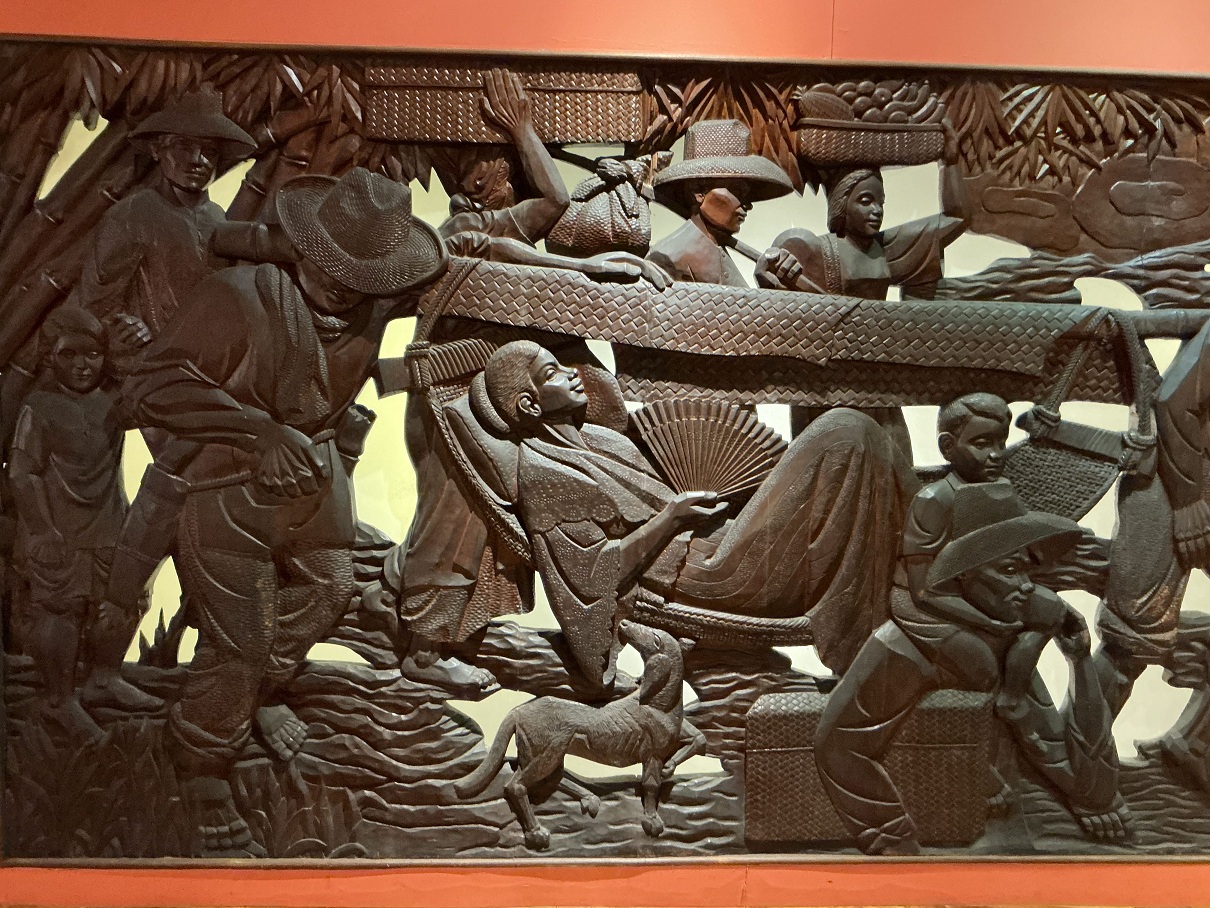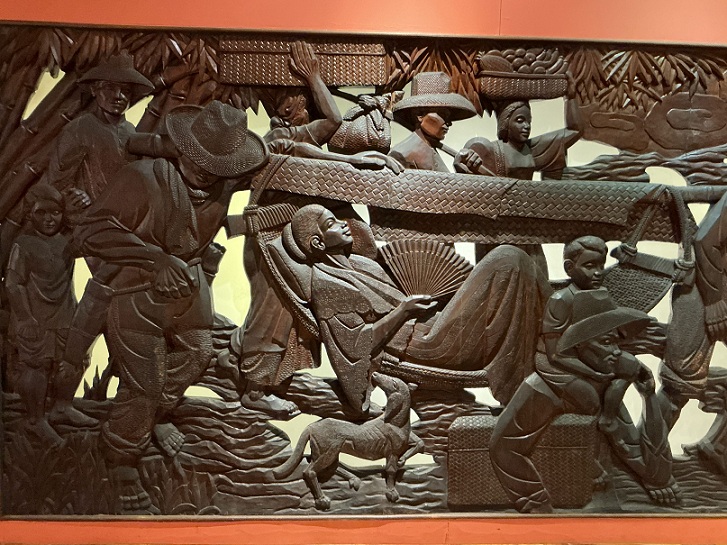
Jose P. Alcantara (1911-2005), described as “the last maestro of traditional wood carving,” is best known for his masterpiece, a large-scale relief narra wood panels that used to adorn the Philam Life Auditorium in Ermita, Manila. Today, Alcantara’s masterpiece is displayed at the National Museum of the Philippines.
Second home
To date, three galleries at the National Museum of Fine Arts (NMFA) display Alcantara’s masterpiece: Gallery XVI (Philippine General Hospital Hall), Gallery XXIV (Philam Life Hall), and Gallery XXII (International Rice Research Institute Hall).
As explained by Jeremy Barns, National Museum director, the panels have been displayed in several galleries, as it would be overwhelming to view them in a single space. Moreover, the Alcantara panels have been placed along works of other Filipino masters, creating a striking visual dialogue between two art mediums and the two Filipino artists.
Early in March 2019, Alcantara’s high relief panels (Untitled:Philippine Scenes I) were installed at Gallery XVI (Philippine General Hospital Gallery).
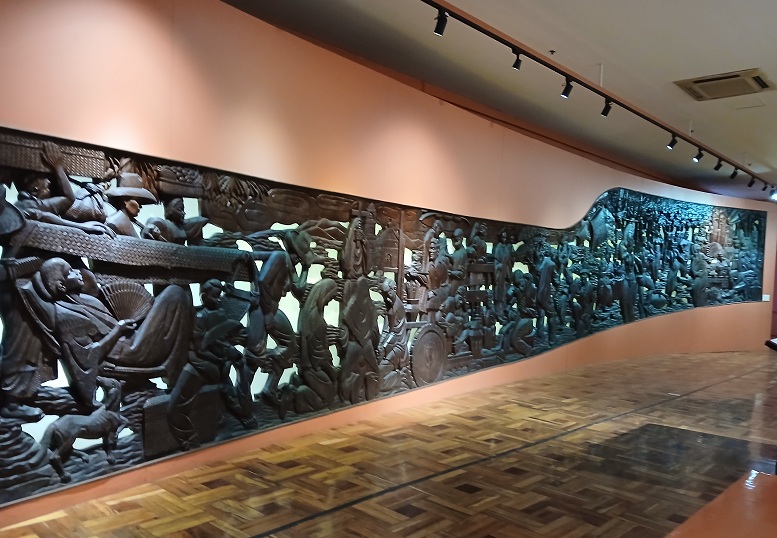
The gallery also contains a set of four large-scale paintings titled The Progress of Medicine in the Philippines made in 1953 by muralist Carlos “Botong” Francisco (1912-1969).
Intricacy in wood
Formerly installed at the right side of the Philam Life Theater, Alcantara’s work consists of 19 panels of narra wood, depicting the everyday lives of Filipinos under Spanish rule. With a church in the background, a group of people kneel and pray; a priest in a cassock says mass and raises a cross; vendors mill around, a cockfighting scene, artisans and carvers make bulul or rice god, fruit vendors, a woman in baro’t saya on a rattan hammock; a tampipi or a rattan suitcase besides it. The other half of these panels portrays a Muslim community amidsts sailboats or vintas; a singkil dance, and brass gongs and drums.
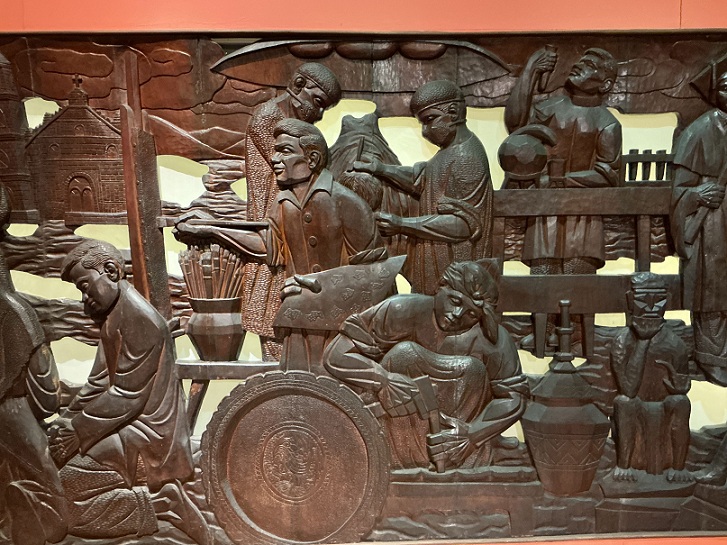
With high relief carving, the figures protrude prominently in the background, making the sculpture appear more three-dimensional, and creating detailed and realistic scenes. Alcantara’s use of textural details in carving such as the rattan crisscross weaves of the tampipi and other native baskets, the rattan and bamboo interweaves of the hammock, the leaves of trees, etc. all add to the authenticity of the panorama of Philippine life in these panels.
Also in 2019, Alcantara’s high relief wood panels from the left side of the Philam Theater on rice cultivation in Philippine history were installed at Gallery XXII (IRRI Hall).
It also features two large-scale paintings and their watercolor studies in 1962 by Vicente S. Manansala (1910-1981).
Gallery XXIV (PhilAm Life Hall): Part of Alcantara’s work, four triangular panels are displayed, namely: Malakas at Maganda or the first man and woman in early Philippine folklore; Mariang Makiling, the fairy guardian of Mount Makiling, Laguna; Mga Panugtog (Musical Instruments); and Mga Kalabaw (Carabaos), all wallowing in the mud.
The hall also features seven large-scale paintings by Vicente S. Manansala, commissioned by Philam for its Ermita building.
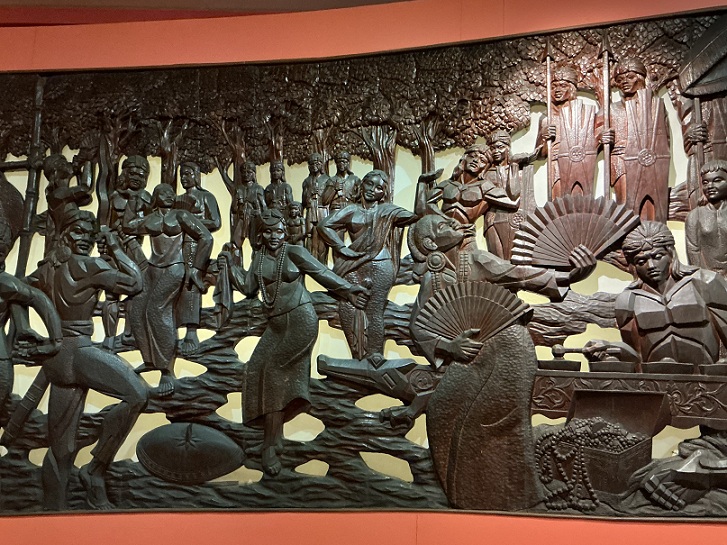
Alcantara_Singkil Dance.Photo by RC Ladrido.
Jose P. Alcantara: Born in Pasay City to Quiterio Alcantara and Segunda Perez, he grew up in Intramuros with his friends Vicente Manansala and Antonio Dumlao; they painted together around the uninhabited area of San Francisco del Monte. The Alcantaras remained neighbors with the Manansalas when their families moved to Binangonan, Rizal until Manansala’s death in 1981.
As Alcantara could not afford to go to an art school, he became an apprentice under sculptor Isabelo Tampico (1850-1933) in hisTaller de Escultura in Quiapo, Manila. Later, Alcantara worked as a woodcarver in Gonzalo Puyat’s premier furniture shop.
As a self-taught sculptor and painter, Alcantara started winning in art competitions. In the 1950s. Among his awards: Ina ng Lahi, 1951, special prize; Ina ng Ani, 1954, third prize, Art Association of the Philippines; second prize, Susmariosep, 1955; and Behold the Man, first prize, First Southeast Asian Art Competition, AAP.
Married to Feliza Cunanan, they had seven children. In the 1980s, Alcantara joined his children in the United States; eventually, he went back to the Philippines until his death. He was buried in a cemetery in Taytay, Rizal with his wife and eldest daughter.
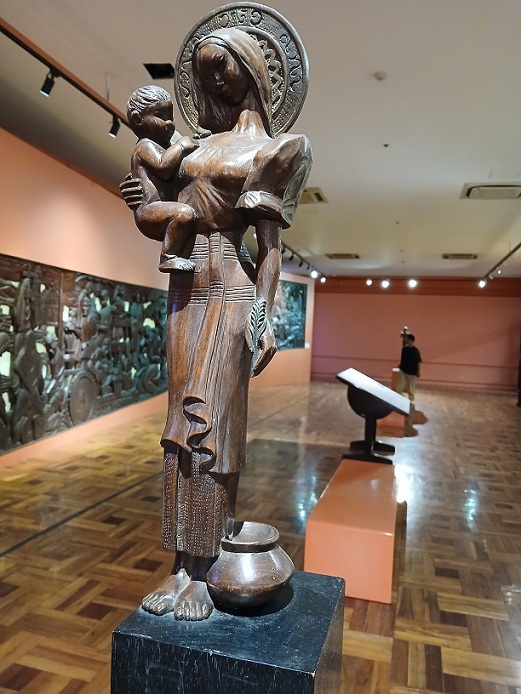
A theater in Ermita
Long before there was a Cultural Center along Roxas Boulevard, the center of performance in music and theater was the Philam Life Theater along UN Avenue, Manila.
Designed by architect Carlos Arguelles, the iconic building of Philam Life insurance company was completed in 1961. BBN Technologies (Bolt, Beranen and Newman) was responsible for the theater’s superior acoustics; they also designed the UN General Assembly Hall, New York City; Lincoln Center’s David Geffen Hall, and the Joseph Meyerhoff Symphony Hall in Baltimore, U.S.
In the 780-seat Philam Life Theater, the walls were adorned with Alcantara’s high relief panels, 60-meter in length. Commissioned by Arguelles, Alcantara created these panels in his workshop in Garrido Street, Santa Ana, Manila assisted by his four sons and wood carvers from Paete, Laguna.
Philam sold the building in 2012; Philam Foundation has decided to loan its art collection to the National Museum.
